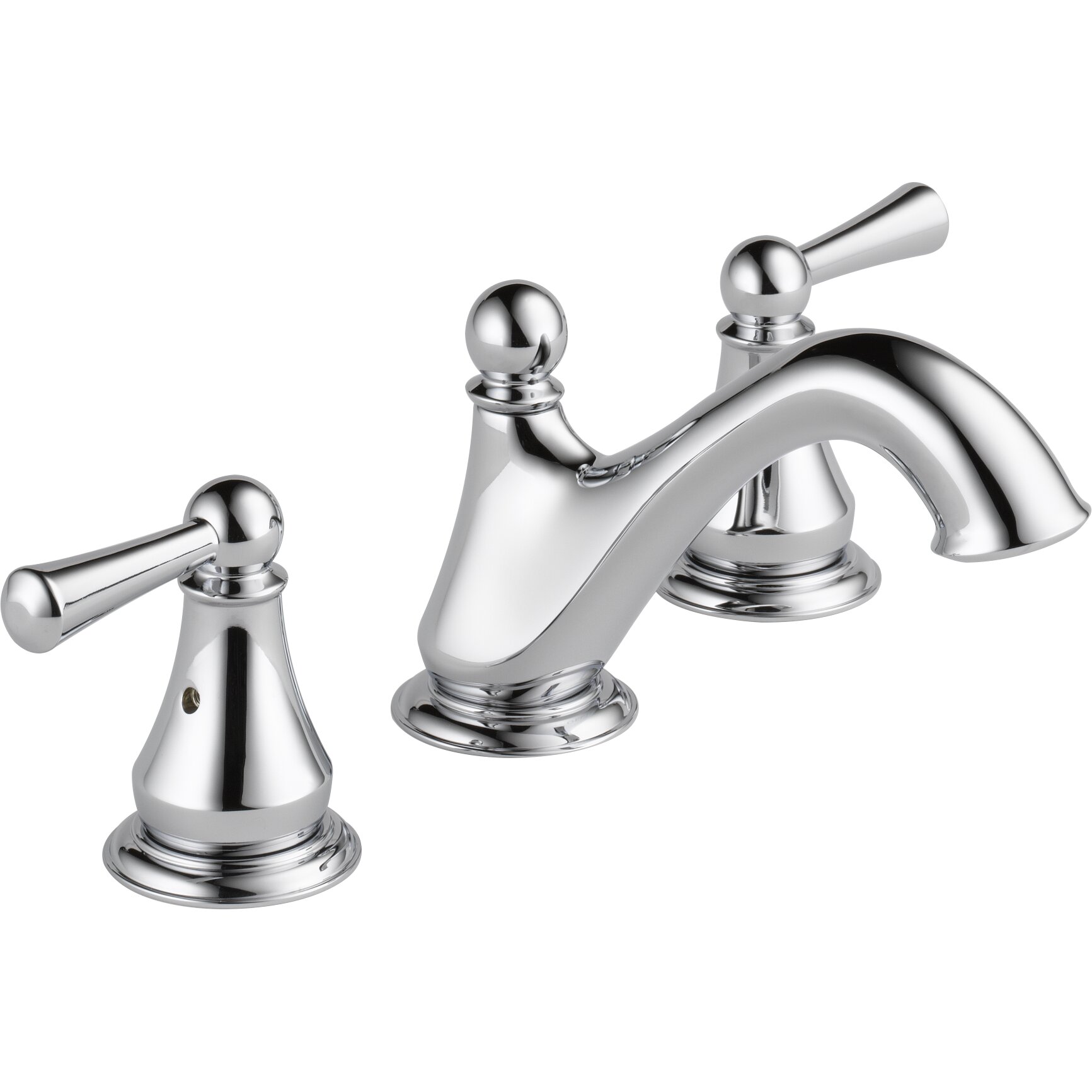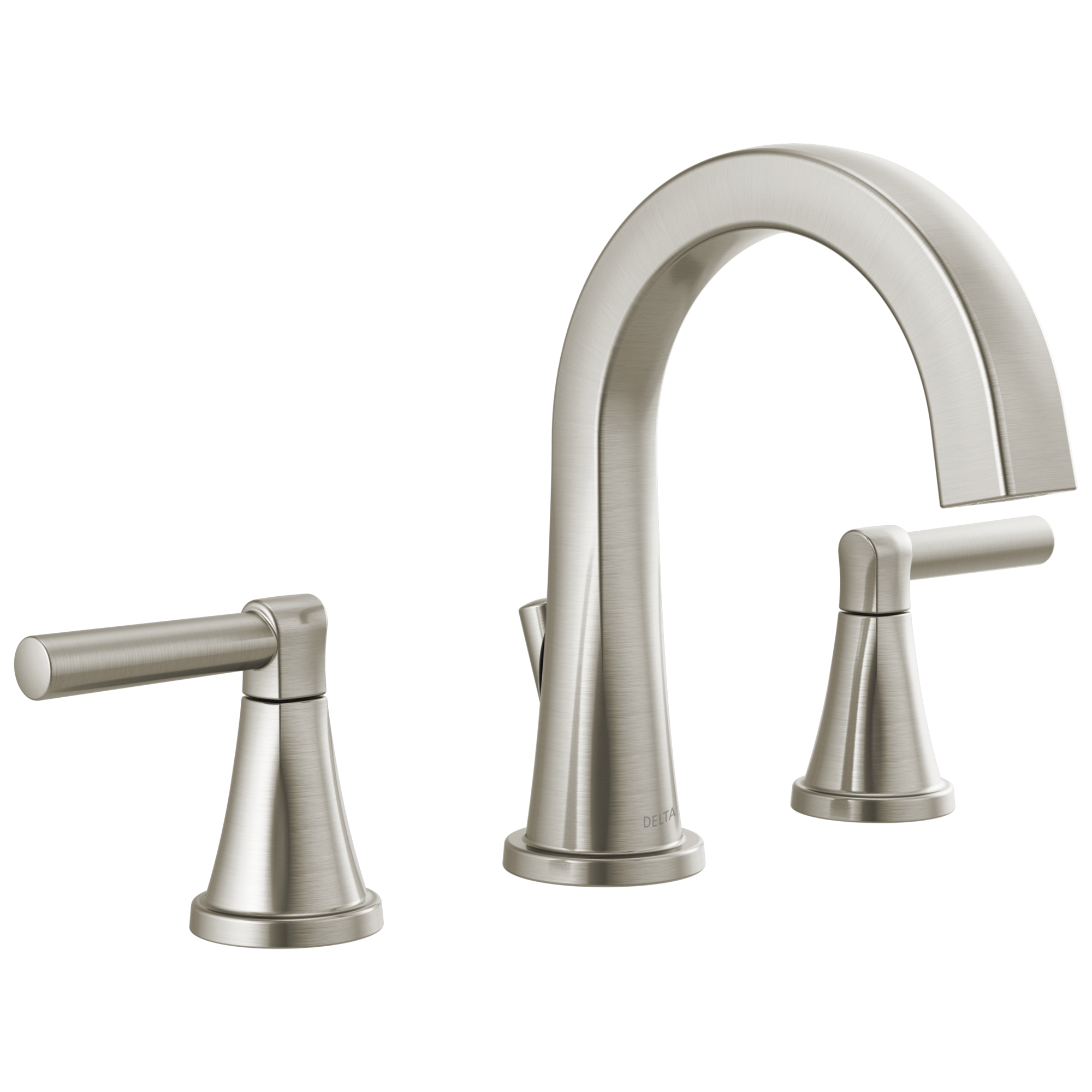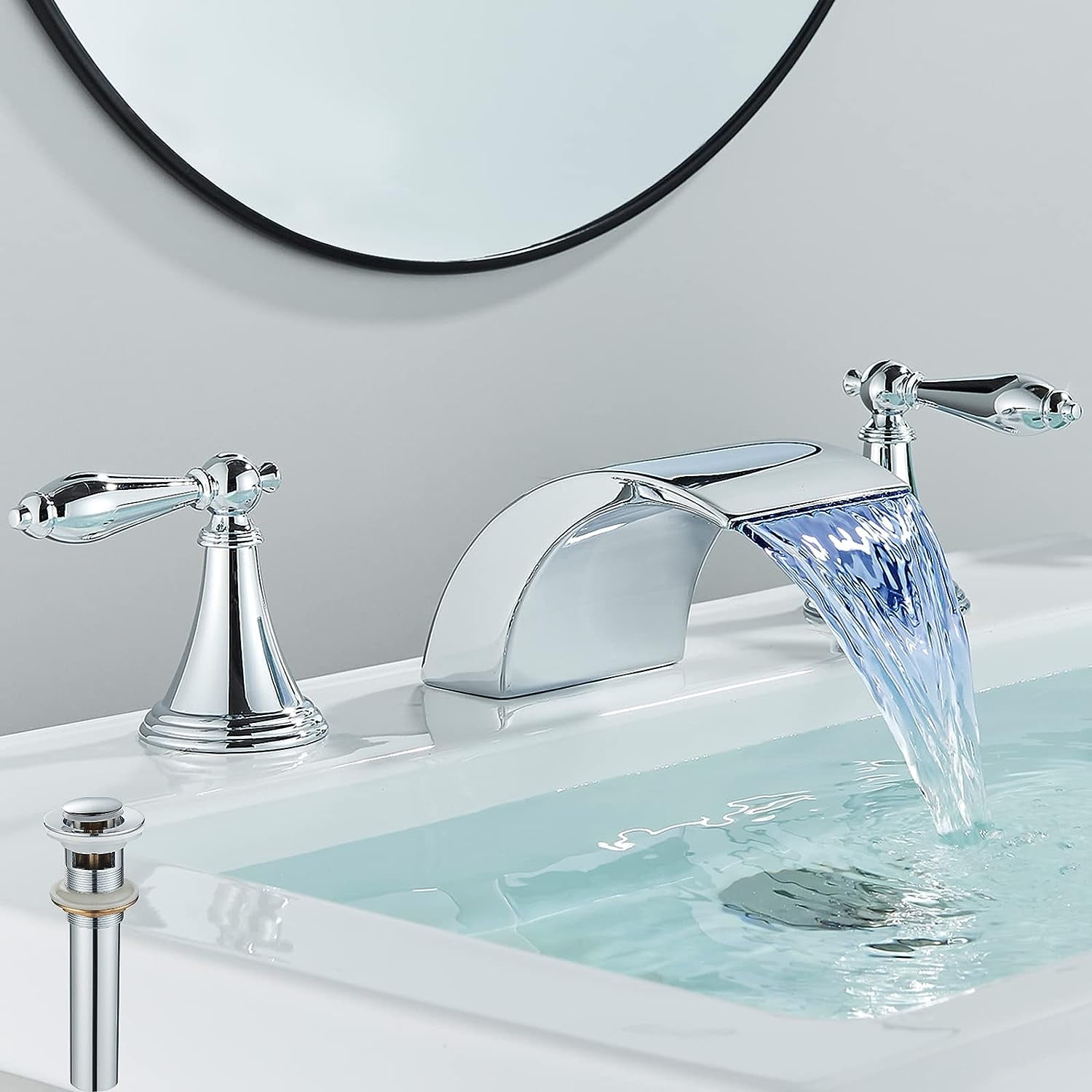History of Vintage Cross Widespread Bathroom Faucets

The evolution of bathroom faucet design in the 20th century was a fascinating journey marked by innovation and evolving aesthetics. From the simple, functional designs of the early 20th century to the more elaborate and stylish widespread faucets of the mid-century, bathroom fixtures became an integral part of home décor.
Early 20th Century Designs
The early 20th century saw the emergence of basic, functional bathroom faucets. These were typically made of brass or nickel-plated brass, with simple lever handles. The focus was on functionality rather than aesthetics, as bathrooms were often utilitarian spaces.
Mid-Century Modernism and the Rise of Widespread Faucets
The mid-20th century witnessed a shift towards more modern and stylish bathroom designs, influenced by the rise of mid-century modernism. This era brought about the popularity of widespread faucets, which featured two separate handles placed on either side of the spout, creating a wider and more symmetrical design.
Prominent Manufacturers and Their Distinctive Features
Several prominent manufacturers emerged during this period, each contributing to the evolution of vintage cross widespread bathroom faucets. Some of the notable names include:
- Kohler: Kohler, a well-established brand known for its durable and stylish fixtures, introduced widespread faucets with elegant designs, often featuring intricate details and decorative elements.
- American Standard: American Standard, another prominent manufacturer, offered a wide range of widespread faucets in various finishes, including chrome, brass, and porcelain, catering to diverse design preferences.
- Moen: Moen, known for its innovative and functional designs, introduced widespread faucets with features like single-handle operation and pressure-balancing technology, enhancing both aesthetics and functionality.
Materials and Their Impact
The materials used in vintage faucets played a crucial role in their aesthetics and durability.
- Brass: Brass was a popular material for vintage faucets, known for its durability and resistance to corrosion. Brass faucets often featured a polished finish, giving them a luxurious and timeless appeal.
- Chrome: Chrome plating was widely used to enhance the durability and shine of brass faucets. Chrome provided a smooth, reflective surface, making the faucets look modern and sophisticated.
- Porcelain: Porcelain was sometimes used for decorative elements on vintage faucets, such as handles or spouts. Porcelain added a touch of elegance and refinement, complementing the overall design.
Design Features and Styles
Vintage cross widespread bathroom faucets are characterized by their elegant and timeless designs, often featuring intricate details and a touch of nostalgia. These faucets are a testament to the craftsmanship and artistry of the past, and their enduring appeal continues to captivate homeowners today.
Design Elements
Vintage cross widespread bathroom faucets are defined by their distinctive design elements, which contribute to their unique aesthetic and functionality.
- Cross Handles: The defining feature of these faucets is the cross-shaped handles, typically made of porcelain, ceramic, or metal. These handles offer a comfortable grip and provide precise control over water flow and temperature.
- Spout Design: The spouts of vintage cross widespread faucets often feature graceful curves and elegant lines. They are typically made of brass or chrome, and some models may have a decorative finish, such as a polished nickel or brushed brass.
- Mounting Configurations: These faucets are typically mounted on the countertop or vessel sink using a widespread configuration, meaning the handles are spaced further apart than centerset faucets. This allows for a more balanced and aesthetically pleasing installation.
Stylistic Influences, Vintage cross widespread bathroom faucet
Vintage cross widespread bathroom faucets reflect various stylistic influences, each with its own distinct aesthetic and design elements.
- Art Deco: Art Deco faucets often feature geometric patterns, bold lines, and luxurious materials like chrome or polished nickel. The cross handles may be adorned with intricate details, such as geometric patterns or decorative accents.
- Mid-Century Modern: Mid-century modern faucets are characterized by clean lines, simple forms, and a focus on functionality. They often feature chrome finishes and minimalist designs, with cross handles that are sleek and streamlined.
- Victorian: Victorian faucets are known for their ornate designs and elaborate details. They may feature intricate scrollwork, floral motifs, and decorative accents, often crafted from brass or nickel. The cross handles may be large and elaborate, with decorative elements that complement the overall design.
Visual Representations
- Art Deco: Imagine a faucet with a chrome finish and geometric cross handles adorned with intricate details. The spout features graceful curves and a polished nickel finish, complementing the overall design. This faucet exudes elegance and sophistication, reflecting the spirit of the Art Deco era.
- Mid-Century Modern: Picture a faucet with a minimalist design, featuring sleek chrome cross handles and a simple, streamlined spout. The faucet is mounted on a countertop, showcasing its clean lines and functionality. This faucet embodies the spirit of the Mid-Century Modern movement, emphasizing form and function.
- Victorian: Envision a faucet with an ornate brass finish and intricate scrollwork adorning the cross handles. The spout features elaborate details, including floral motifs and decorative accents. This faucet embodies the opulence and grandeur of the Victorian era, showcasing craftsmanship and artistry.
Functionality and Installation: Vintage Cross Widespread Bathroom Faucet
Vintage cross widespread bathroom faucets, despite their age, are known for their robust functionality and timeless design. Understanding their workings and installation process is crucial for appreciating their enduring appeal and ensuring their continued use.
Vintage cross widespread bathroom faucet – These faucets typically employ a two-handle design, with separate levers for controlling hot and cold water flow. Each handle is connected to a ceramic disc cartridge or a compression valve, which regulates the water flow. Turning the handle clockwise restricts the flow, while turning it counterclockwise increases it. The temperature is adjusted by balancing the flow of hot and cold water using the respective handles.
Installation Process
Installing a vintage cross widespread bathroom faucet requires careful planning and attention to detail. The process involves several steps, ensuring proper connections and a secure installation.
- Prepare the Area: Turn off the water supply to the bathroom and drain the pipes. This step is crucial for preventing water damage during the installation process.
- Remove the Old Faucet: Unscrew the old faucet from the sink and countertop, carefully removing any nuts, washers, and other components. Be sure to note the order of removal for easier reassembly.
- Clean the Surface: Thoroughly clean the sink and countertop surface where the new faucet will be installed. Ensure the area is free of debris and dirt, promoting a secure and leak-free installation.
- Install the Rough-in Valve: Install the rough-in valve, which is a hidden component that connects to the water supply lines. This step requires drilling holes in the countertop and ensuring the valve is correctly positioned for the faucet’s placement.
- Install the Faucet Base: Position the faucet base on the sink and secure it with mounting nuts and washers. Ensure the base is level and centered, allowing for proper faucet alignment.
- Connect the Supply Lines: Connect the hot and cold water supply lines to the rough-in valve and the faucet base. Secure the connections with appropriate fittings and tighten them securely to prevent leaks.
- Install the Handles: Attach the handles to the faucet base, ensuring they are securely fastened and move smoothly. The handles should align correctly with the hot and cold water supply lines.
- Test for Leaks: Turn on the water supply and check for leaks at all connections. Tighten any loose connections and address any leaks promptly.
- Clean and Enjoy: Clean the faucet with a soft cloth and mild detergent. Once the installation is complete, enjoy the beauty and functionality of your vintage cross widespread bathroom faucet.
Challenges and Precautions
Installing vintage cross widespread bathroom faucets can present certain challenges, requiring patience and expertise.
- Compatibility: Vintage faucets may not be compatible with modern plumbing systems. Adapters or modifications may be necessary to ensure proper connections and functionality.
- Parts Availability: Finding replacement parts for vintage faucets can be challenging. Researching and sourcing parts from specialized dealers or online platforms is essential for maintaining the faucet’s functionality.
- Installation Expertise: Installing vintage faucets requires experience and knowledge of plumbing systems. If you are not confident in your abilities, consider hiring a professional plumber for a safe and successful installation.
Comparison with Modern Counterparts
Vintage cross widespread bathroom faucets differ significantly from their modern counterparts in terms of functionality and installation.
- Functionality: Modern faucets often feature single-lever controls for both water flow and temperature regulation. This design offers greater convenience and ease of use, while vintage faucets typically require two separate handles for these functions.
- Installation: Modern faucets are generally easier to install, with simplified connections and standardized components. Vintage faucets may require more specialized tools and techniques, depending on the age and design of the faucet.
- Water Efficiency: Modern faucets are designed with water-saving features, such as aerators and flow restrictors, reducing water consumption. Vintage faucets typically lack these features, leading to higher water usage.
Restoration and Preservation

Restoring a vintage cross widespread bathroom faucet is a rewarding project that allows you to preserve a piece of history while enhancing the beauty and functionality of your bathroom. It’s an investment in the longevity of your fixtures and a way to appreciate the craftsmanship of a bygone era.
The restoration process involves a delicate balance of cleaning, polishing, and repair, all while preserving the original character and authenticity of the faucet. It’s a labor of love that requires patience, attention to detail, and a deep appreciation for vintage design.
Cleaning and Polishing
The first step in restoring a vintage cross widespread bathroom faucet is to thoroughly clean it. This removes dirt, grime, and mineral deposits that can obscure the original finish and hinder its functionality.
- Use a mild soap and warm water to gently scrub the faucet, paying attention to the intricate details and crevices.
- Avoid harsh chemicals or abrasive cleaners, as these can damage the finish.
- For stubborn stains, a non-abrasive cleaner designed for brass or chrome can be used. Always test the cleaner on an inconspicuous area first to ensure it doesn’t damage the finish.
- After cleaning, dry the faucet thoroughly with a soft cloth.
Once the faucet is clean, you can begin polishing it to restore its shine and brilliance. The type of polish you use will depend on the finish of the faucet.
- For brass faucets, use a brass polish that is specifically designed for cleaning and restoring the natural patina of brass.
- For chrome faucets, use a chrome polish that will remove tarnish and restore the shine.
- Apply the polish with a soft cloth and rub gently in a circular motion.
- After polishing, rinse the faucet with clean water and dry it thoroughly.
Repairing Damaged Parts
If the faucet has any damaged parts, such as a broken handle, worn-out washers, or leaking cartridges, these will need to be repaired or replaced.
- Examine the faucet carefully for any signs of damage or wear.
- Identify the specific parts that need to be repaired or replaced.
- You may be able to find replacement parts at vintage plumbing supply stores, online retailers, or from specialized restoration services.
- If you’re not comfortable with plumbing repairs, it’s best to consult a professional plumber.
Preserving Authenticity
The most important aspect of restoring a vintage cross widespread bathroom faucet is preserving its original character and authenticity. This means avoiding any alterations or modifications that would detract from its historical value.
- Use only genuine replacement parts that are compatible with the original design.
- If you’re unsure about the authenticity of a part, consult with a vintage plumbing expert.
- Avoid painting or refinishing the faucet unless it’s absolutely necessary.
- If you do decide to paint or refinish the faucet, use a high-quality paint or finish that is compatible with the original material.
Finding Replacement Parts and Services
Finding replacement parts for vintage cross widespread bathroom faucets can be challenging, but there are several resources available.
- Vintage plumbing supply stores often carry a wide selection of parts for older fixtures.
- Online retailers specializing in vintage plumbing parts can also be a good source.
- Specialized restoration services offer a range of services, from cleaning and polishing to full-scale restoration.
When searching for replacement parts, it’s important to provide as much information as possible about the faucet, such as the manufacturer, model number, and year of manufacture. This will help to ensure that you find the correct parts for your specific faucet.
Vintage Cross Widespread Faucets in Interior Design

Vintage cross widespread bathroom faucets are more than just functional fixtures; they are design elements that can transform the ambiance of a bathroom, infusing it with a timeless elegance and a touch of nostalgia. These faucets seamlessly blend with various interior design styles, adding a unique charm to any space.
Vintage Cross Widespread Faucets in Traditional Bathrooms
Traditional bathrooms often embrace classic design principles, emphasizing symmetry, intricate details, and a sense of history. Vintage cross widespread faucets, with their graceful curves and ornate handles, perfectly complement this aesthetic. Imagine a bathroom with wainscoting, crown molding, and a clawfoot tub, adorned with a vintage cross widespread faucet featuring porcelain handles and a polished brass finish. The faucet’s timeless design echoes the grandeur of the surrounding décor, creating a cohesive and luxurious atmosphere.
Vintage Cross Widespread Faucets in Farmhouse Bathrooms
Farmhouse bathrooms exude a rustic charm, often incorporating natural materials like wood, stone, and exposed brick. Vintage cross widespread faucets, particularly those with a brushed nickel or oil-rubbed bronze finish, blend seamlessly with this aesthetic. Picture a farmhouse bathroom with a distressed wood vanity, a farmhouse sink, and a vintage cross widespread faucet with a simple yet elegant design. The faucet’s rustic appeal complements the natural elements of the space, creating a warm and inviting atmosphere.
Vintage Cross Widespread Faucets in Contemporary Bathrooms
Contemporary bathrooms are characterized by clean lines, minimalist aesthetics, and a focus on functionality. Vintage cross widespread faucets can surprisingly add a touch of vintage charm to these spaces, provided they are chosen carefully. Look for faucets with a sleek, modern design, such as those with chrome finishes and minimalist handles. Imagine a contemporary bathroom with a sleek vanity, a floating sink, and a vintage cross widespread faucet featuring a minimalist design and a chrome finish. The faucet’s sleek lines complement the modern aesthetic of the bathroom, adding a touch of vintage elegance without disrupting the contemporary feel.
Collecting Vintage Cross Widespread Bathroom Faucets
Collecting vintage bathroom fixtures, including cross widespread faucets, has become a popular hobby for enthusiasts seeking to preserve a piece of history and add character to their homes. These faucets are not just functional plumbing elements; they are also historical artifacts that reflect the design trends and craftsmanship of their era.
Factors to Consider When Collecting Vintage Cross Widespread Faucets
The pursuit of vintage cross widespread faucets goes beyond simple aesthetics. It involves a deep appreciation for the craftsmanship and history embodied in these fixtures. To embark on this journey, several key factors should be considered:
- Condition: The condition of the faucet is paramount. Look for faucets that are in good working order, with minimal wear and tear. While some patina and signs of age are desirable, significant damage or corrosion can detract from the value and functionality of the faucet.
- Authenticity: Authenticating a vintage cross widespread faucet is crucial to ensure its historical significance and value. Look for identifying marks, such as manufacturer’s stamps or patent dates, to verify its origin and age. Consult with experts or reference books to confirm the authenticity of the faucet.
- Historical Significance: The historical significance of a vintage cross widespread faucet can be enhanced by its association with a particular era, style, or designer. Researching the history of the faucet can provide valuable insights into its origins and cultural context.
Resources for Finding and Authenticating Vintage Cross Widespread Faucets
Finding and authenticating vintage cross widespread faucets requires a combination of online resources, local antique stores, and specialist dealers:
- Online Marketplaces: Websites like eBay, Etsy, and specialized antique marketplaces offer a vast selection of vintage cross widespread faucets. However, exercise caution and research the seller’s reputation before making a purchase.
- Antique Stores: Local antique stores are a treasure trove for vintage bathroom fixtures. Explore antique districts and browse the inventory of reputable dealers to discover hidden gems. Be sure to ask about the history and provenance of the faucets.
- Specialist Dealers: Specialist dealers in vintage plumbing fixtures or antique bathroom accessories can provide expert advice and authentic pieces. They often have extensive knowledge of the market and can help you identify and authenticate vintage cross widespread faucets.
